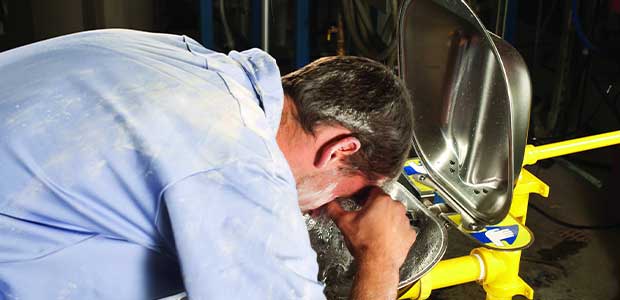
Five Common Pitfalls to Avoid with Emergency Safety Showers and Eyewashes Gas
Don’t let these common mistakes allow your emergency equipment to suffer.
- By Ryan Pfund
- Aug 01, 2022
Worksite hazards involving harmful chemicals, dusty conditions and flammable materials present fluctuating risks and challenges to employees. While emergency safety showers and eyewashes can help abate these hazards, there are unfortunately several common areas involved with the installation, operation and maintenance of emergency shower equipment that can fall by the wayside and hinder their performance in an emergency.
Specifically, it’s crucial to regularly evaluate—and recheck—the performance, placement and sterility of equipment to ensure ANSI/ISEA compliance and efficacy when needed.
The following are some of the most common mistakes made with emergency equipment, along with strategies for avoiding them in the first place:
Failing to Perform Weekly Testing and Activations
According to ANSI/ISEA Z358.1–2014 American National Standard for Emergency Eyewash and Shower Equipment, emergency drench showers, eyewashes and eye/face washes must be activated one time per week. Weekly testing and activations may seem like time-consuming and laborious tasks but they are just as important as they are necessary.
Safety equipment must work properly in supplying tepid water when needed. Unless the product is activated on a weekly basis, water stagnating in the supply piping may not be clean. Weekly activation ensures the product is properly functioning and safe for the person to use when needed. This activation makes sure that nothing is blocking the flow of the flushing fluid and eliminates any chance of contamination from stagnant water. The fixture needs to be activated long enough to ensure proper flushing fluid is available and to clear the line of any sediment build-up. (A longer and more thorough evaluation should be conducted once per year.)
Inspection tags are often included with fixtures to document testing and to satisfy a safety audit. To further help assist in testing, manufacturers offer a variety of specially designed devices.
Neglecting to Check Proper Locations of Emergency Eyewashes and Showers
At least yearly, it’s important to conduct site evaluations to pinpoint at-risk areas, potential hazards and emergency needs. In particular, pay attention to product location relative to hazards to ensure they are easily seen and accessed.
This article originally appeared in the July/August 2022 issue of Occupational Health & Safety.